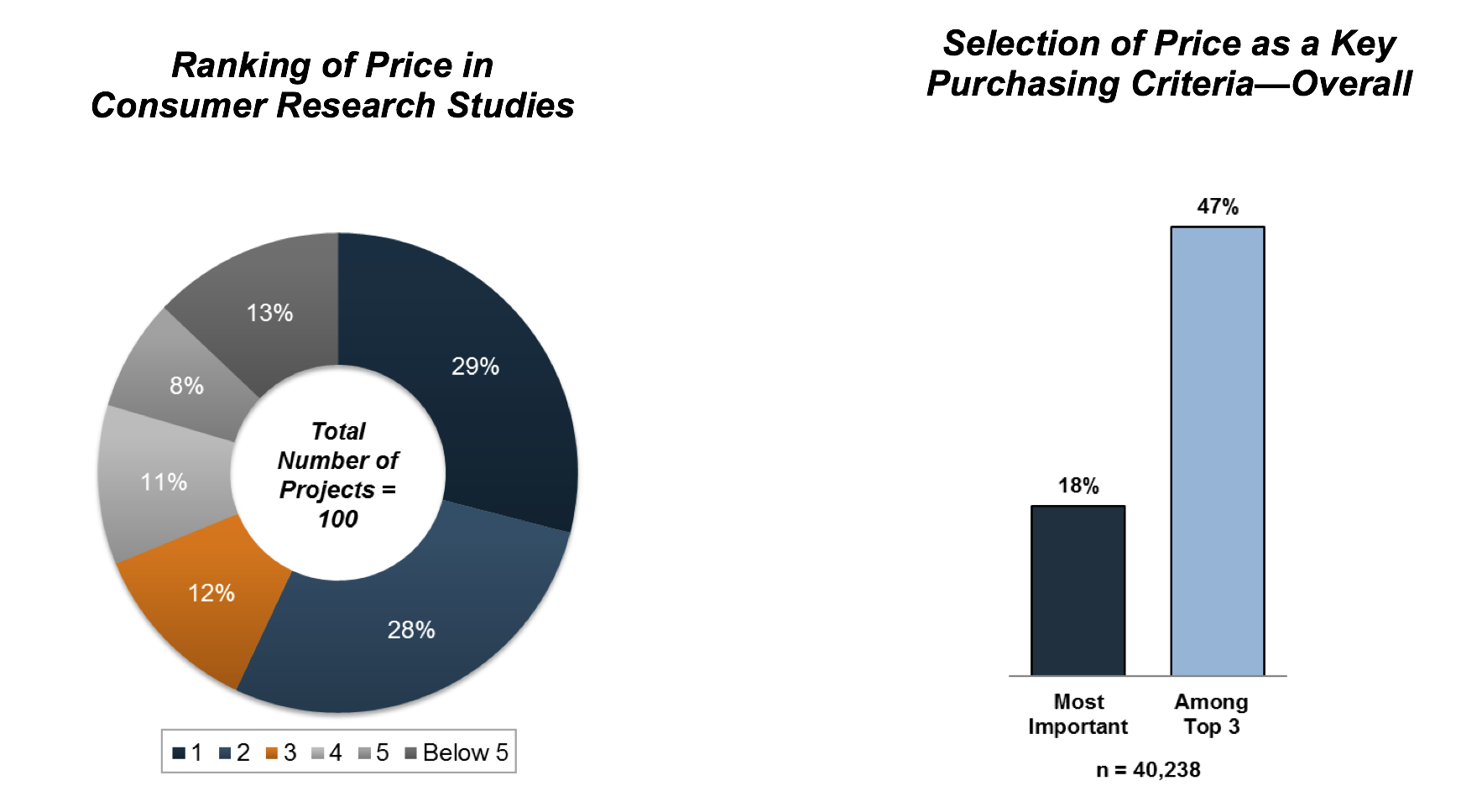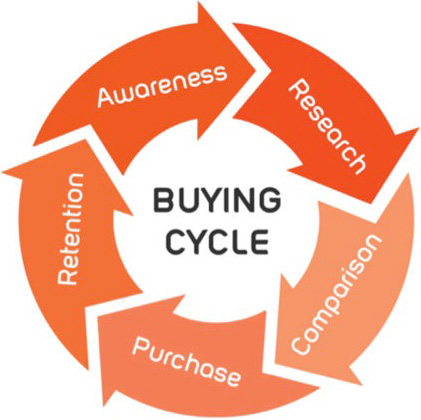4 Reasons They Didn’t Buy from You (And What to Learn from Users Who Didn’t Convert)

Irrespective of how well your website is doing and how great your sales team is, not every visitor or lead will buy from you. You simply can’t have a 100% conversion rate.
If you think about it, it’s similar with every type of relationship, even non-business ones. Can you be friends with everyone you meet?
Of course not!
And it doesn’t mean that there’s something wrong with you or with some of the people you meet. It’s just how it is – lack of chemistry, lack of things in common, lack of willingness to invest in forming a new relationship are just a few of the reasons why some people are just passing through our life.
The same can be said about visitors or leads who don’t convert. They came, they saw and they left.
While you can’t be expected to have a 100% conversion rate, you shouldn’t let this stop you from identifying why people won’t buy from you. In other words: don’t shrug missed conversions as something that happens to anyone.
Whatever your current conversion rate, you should work on improving it.
Sometimes you win, other times you learn.
This is the biggest takeaway I got from being rejected as a freelancer or having my agency’s leads bail out on my well-planned conversion process.
At first, I was crushed by every rejection, especially as a freelancer – it’s much easier to take it personally when you’re all on your own. But I eventually realized that rejection is part of anyone’s professional life.
And I started to learn from it.
These are a few of the things I learned from my own missed conversions, as well as from those of Idunn’s clients.
What You Can Learn from People Who Didn’t Buy from You
First off, you have to be open to criticism. More importantly, you have to be open to self-criticism. If you’re not willing to admit you made a few mistakes, you’re never going to improve your conversion rate.
So beware – I’ll be blunt!
-
Your Pricing Sucks
This doesn’t mean that your products are too expensive. Quite the opposite, it may mean that they are too cheap.
While price is definitely one of the biggest factors influencing purchase decisions, it’s not always about providing the cheapest products or services.
 Image via Stax Insights
Image via Stax Insights
It’s rather about proving that what you’re selling is worth the price.
In fact, it could be argued that lowering your prices just to close a deal is the easiest way out. As business owners we tend to throw discounts left and right whenever we need a cash influx.
The truth is there is a time to offer discounts and a time to refrain from it.
When you go out of your way to price your products or services below your competitors’ price tags, you run the risk of cheapening your brand. Too many discounts or low prices all the time are hard to recover from.
People begin to expect them. And why should they put more value on your brand than you do.
What can you learn from it?
When your clients object about pricing directly or when you see that visitors bounce off your website from your pricing page, don’t haste into lowering your prices. Start by considering whether you did a good job explaining the value of your products/services or not.
Take a look at your content. Is it on point? Does it convey the value of what you have to offer? Can you do a better job explaining value?
I’m not saying you should go for a top-tier pricing strategy. Not unless your services are truly well above everyone else’s. Of course you need to have competitive prices.
But you shouldn’t lower them until you’re barely making ends meet. This strategy could prove catastrophic in the long run.
Instead, research more of your competitors’ strategy. Find out exactly what’s missing from their products or services. Then make a point out of proving your offer is better. This is the first step in proving that your pricing is adequate.
-
You’re Barking at the Wrong Tree aka Selling to the Wrong Customer
In my experience, most of the pricing objections come from people who are not supposed to be your clients anyway. I wrote an article about how selling to the wrong customer can have a negative impact on SaaS growth.
I strongly believe the arguments in that article stand true for many other industries.
Identifying the right buyer persona is at the core of any inbound sales or inbound marketing strategy.
Think about it this way: would you try to sell a Lamborghini to a freshman in college?
Of course not!
You’d be wasting time and other valuable resources on trying to close a sale than will never happen, no matter how good your pitch or your content are.
I know how it feels to want to enlarge your pool of potential customers. But this will only drive the right ones away and keep you spending money where you shouldn’t.
When someone says “thank you, but I’m not interested”, don’t take it as a polite response and move on. Take it literally and start adjusting your strategy.
What can you learn from “thank you, but I’m not interested”?
As always, start with the “why”. Why is the customer not interested?
Then dig deeper: do they know your product? Can they use it? Have you created enough brand awareness? Are they loyal to another brand? If so, what did that brand do to gain their loyalty?
Answering each of these questions will get you much closer to defining your target audience.
After doing this, stick to it!
I can’t be any clearer. It may be tempting to add another demographic to your Facebook ads or Google AdWords targeting. But don’t!
The fewer people you are trying to reach and the narrower your criteria, the better your chances for success.
Think about it this way: every cent you spend on ads that reach the wrong people is a wasted cent. How many of those can you really afford to lose?
-
You’re Forgetting about the Purchase Cycle
A new handbag or a new pair of loafers can be impulse purchases. Impulse buyers don’t go through a cycle before pulling out their credit cards. Or they do, but it’s all happening to fast for you to be able to do anything about it.
However, the other buyers do.
 Image via iFormat
Image via iFormat
We’d all like to skip to the end. Our social media marketing would be incredibly simple: we’d post BUY NOW! Near all of our products or services and be done with it.
Plus, who would need CRO copywriting and SEO copywriters anymore? Anyone can plaster “BUY NOW!” on a website, right?
The fact that we need all these and much more in our strategies proves that screaming “BUY ME!” at the top of your digital lungs isn’t enough.
If you don’t take into account the purchase journey, people won’t buy from you.
Rush them into a purchase when they’re barely aware that they might need what you’re selling and they’ll feel aggressed. Be too late and your competitors will have sealed the deal in your place.
So what can you do?
Guide your buyer through every stage of the buying cycle. Create content to:
- Educate in the awareness phase
- Make it easy to get information in the research phase (SEO is your best friend here)
- Compare your offering to that of your competitors in the comparison phase
- Delight and keep them engaged after the purchase is made (it’s easier to re-sell to an existing customer)
Don’t rush into creating content that’s designed to close leads. Lead generation has to come first. So make sure that you have content that can guide your buyers along each step of the buying cycle.
Need help creating content that brings leads and helps closing them? Or skilled SEO copywriters can help with the right content for the right audience. Check out what we can offer.
-
You Don’t Make Potential Buyers Feel Safe
Again, unless we’re talking about a small, impulse purchase, no one buys something unless they feel confident about their decision.
How do they know it will work?
How do they know it will work for them?
In other words: what if they buy and then regret it?
Assume that all buyers will research your product or service. And then make sure that, during their research, they’ll be able to find what they need to make them feel safe.
How can you make a prospect feel safe?
Glad you asked.
Here are some ideas:
- Offer a free, no-obligations trial. This will give them the chance to see that your product really works and that it’s a good fit for them.
- Offer social proof. Testimonials from your clients (the more in-depth, the better) are a great way to build confidence in your product.
- Offer a free refund. This will show that you are so confident in what you’re selling that you’re willing to bet cold, hard cash that they’ll like it, too.
- Show off your industry awards or any accolades you may have received. Don’t be afraid to brag!
Conclusions
When sales start to go south, the first thing we tend to do is blame the competition or the customers. This is anything but productive.
Instead of assigning blame, why not try to learn something even from the most difficult of clients? Finding out why people didn’t buy from you is the first step. Next up, identify the top reasons and fix them. You’ve got the blueprint for the top reasons above.

